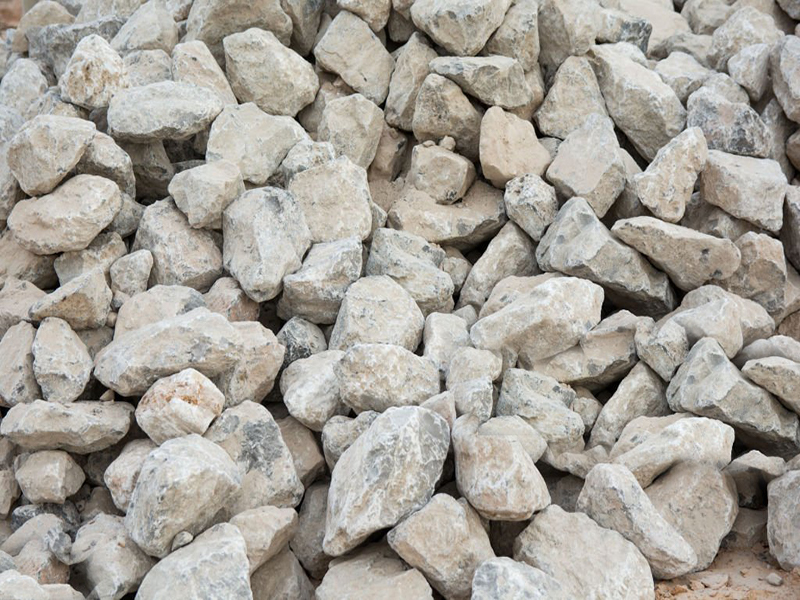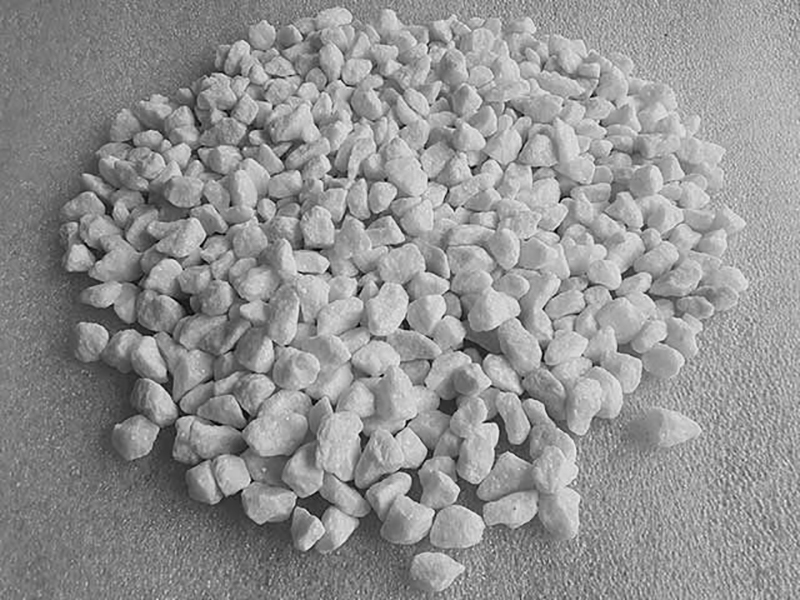Welcome to the Dolomite Series! Join us on a journey through the captivating world of dolomite, a mineral that has played a significant role in Earth’s history and continues to fascinate scientists and enthusiasts alike, often overlooked by limestone, has many surprising uses. Calcium magnesium carbonate (CaMg(CO3)2) is essential to many industries and could lead to a more sustainable future. In the next few articles, we’ll explore dolomite’s formation, applications, and exciting possibilities. This “double carbonate” wonder’s hidden potential will amaze you!
Formula of dolomite 🙁 CaMG{CO3}2)
Dolomite is a mineral composed of calcium and magnesium carbonates. Its chemical formula is CaMg(CO₃)₂, indicating that each unit of dolomite contains one calcium ion (Ca²⁺), one magnesium ion (Mg²⁺), and two carbonate ions (CO₃²⁻). The carbonate ions are bonded to both the calcium and magnesium ions, creating a stable crystal structure.
Discovering dolomite, a geological gem. Dolomite, a rock with a unique composition (calcium magnesium carbonate, CaMg(CO3)2), is formed when magnesium-rich fluids replace calcium in limestone. Dolomite is versatile despite its white, grey, or pink appearance. This “double carbonate” mineral is fascinating and surprisingly influential, from construction materials and steel production to soil health booster and climate change weapon.
The history of geology in Sri Lanka does not provide any specific information regarding the point at which dolomite “arrived” on the island. Geological processes, such as magnesium-rich fluids interacting with preexisting limestone over extraordinarily long periods of time, are responsible for the formation of dolomite. The dolomite deposits in Sri Lanka most likely formed gradually over the course of the country’s geological history, rather than being the result of a single event.
In contrast to mined resources, Sri Lanka’s dolomite wealth has multiple origins. Limestone was formed by marine life depositing calcium carbonate millions of years ago. This limestone was dolomitized by magnesium-rich fluids. Sri Lanka’s geological uplift exposed these transformed rocks, creating dolomite deposits that support its development.
Now we wil see what are the Especially in the use of chemical fertilizers for coconuts and Applying dolomite two months before or after is a successful crop management technique, Be careful with dolomite around trees! It can raise soil pH and add magnesium, but too much or on high-pH soil is harmful. Too much dolomite condenses soil, hindering root respiration and nutrient uptake. It can also upset the delicate mineral balance, reducing the availability of essential elements still present and harming your tree. Test your soil’s pH before using dolomite—your tree may benefit from a slightly acidic environment.
Let see why should dolomite be applied to solid, Tread carefully with dolomite around your trees! While it can raise soil pH and add magnesium, too much or using it on already high-pH soil can be disastrous. Excess dolomite condenses soil layers, hindering root respiration and nutrient uptake. It can also disrupt the delicate mineral balance, reducing the availability of essential elements even if they’re present, ultimately harming your tree’s health. Test your soil’s pH first – dolomite might not be the answer, and in some cases, a slightly acidic environment is best for your tree.
Plant happiness depends on soil pH! Consider 7 neutral. Elevations above 7 indicate alkaline soil, while drops below 7 indicate acidic soil. However, most crops thrive and yield well between 5.5 and 6.5. This sweet spot depends on the crop you’re growing. Quick soil tests are your best friend to ensure your plants have the right pH for growth.
Plant growth depends on soil pH, which affects nutrient availability and health. Crop growth can be hampered by acidic soil pH below 7. Because acidic soils have more hydrogen ions (H+), they disrupt the delicate nutrient balance needed for plant growth. Root uptake of essential nutrients like phosphorus, calcium, and magnesium decreases, causing stunted growth, reduced yields, and even plant death. Understanding and maintaining soil pH is essential for agricultural success.
Any agricultural endeavor depends on soil pH, a crucial but often overlooked factor. A neutral pH of 7 is ideal, but below that, soil becomes acidic. Increased hydrogen ions (H+) disrupt the delicate nutrient dance necessary for plant growth. Root uptake of phosphorus, calcium, and magnesium decreases. This causes stunting, lower yields, and plant death. Understanding and maintaining soil pH is crucial for agricultural success.
Here is the reason of Even with adequate levels of nitrogen (N), phosphorus (P), potassium (K), calcium (Ca), magnesium (Mg), and sulfur (S), soil acidification is a hidden challenge for agriculture. Acidity disrupts nutrient availability. At lower pH, H+ concentration rises. They compete with plant roots for nutrient cations like Ca2+, Mg2+, and K+. Even though these elements are in the soil, this competition prevents the plant from absorbing them. Even in “nutrient-rich” soil, crops grow stunted, yield less, and may have nutrient deficiencies.
Soil tests show that availability is more important than presence for crop yields. Acidic soil can make nitrogen, phosphorus, potassium, calcium, magnesium, and sulfur—essential plant nutrients—inaccessible. The offender? Acidic environments increase H+ concentration. They compete with plant roots for nutrient cations like Ca2+, Mg2+, and K+. Although nutrients are in the soil, this competition prevents their uptake. Even with a “nutrient-rich” analysis, crops grow stunted and yield less. Thus, a soil pH test is essential before fertilizing. Optimizing nutrient availability in low pH (high acidity) requires several strategies. Dolomite, a valuable mineral that raises soil pH, maximizes nutrient absorption and crop health.
Beyond pH correction, dolomite has other effects. It creates a healthy soil ecosystem by supporting beneficial soil microorganisms. This pH range promotes microbial activity, accelerating organic matter decomposition. Plants can easily absorb nutrients from this rapid breakdown. In essence, dolomite conducts a symphony of beneficial microbes and nutrient cycling, creating richer, more fertile soil for your crops.
Dolomite benefits go beyond pH. It promotes soil microbiology. This optimal pH range is ideal for air-fixing bacteria, which naturally enrich the soil with nitrogen. Additionally, dolomite provides calcium and magnesium, boosting the soil’s nutritional profile. Benefits continue! Calcium in dolomite improves soil structure and provides a vital nutrient. Loosening the soil improves drainage and aeration, nurturing healthy root growth and crop nutrient uptake.
Timing is crucial when using dolomite to improve soil health. A 6-8-week gap between dolomite and nitrogen-based fertilizers is essential. It addresses potential pitfalls in two ways: Dolomite’s initial pH increase causes nitrogen loss through evaporation or ammonia gas. Second, acidic fertilizers can inhibit dolomite’s pH-adjusting ability. By timing, dolomite and nitrogen-based fertilizers reach their full potential, creating fertile soil and a bountiful harvest.
We will see what are advantages of doldolomite ared what are challenges, it refer to Coconut farming in Sri Lanka is complicated by dolomite. It solves coconut palms’ acidic soil problem naturally. Calcium and magnesium in dolomite improve nutrient uptake, which may improve palm health and nut production. Magnesium improves soil structure and growth, increasing nutrient availability. These improvements can produce higher-value coconuts with thicker husks and more coconut water. Dolomite supports sustainable farming. Applying properly is difficult. Overusing dolomite or applying it to soil with an optimal pH can disrupt the soil’s nutrient balance, harming palms. Therefore, soil testing is essential to maximize dolomite’s benefits while avoiding side effects.
The coconut industry in Sri Lanka can benefit from dolomite, a natural mineral. Overly acidic soil hinders coconut palm growth and productivity. The calcium and magnesium in dolomite make it magical. It helps palms absorb nutrients by neutralizing acidic conditions. This may boost palm health and nut production. Benefits go beyond a quick fix. Dolomite magnesium improves soil structure and palm growth. And the result? Superior coconuts! Thicker husks (for coir production), more coconut water, and possibly better flavor bring premium market value. Additionally, dolomite supports sustainable farming. Proper use is crucial. Dolomite overdose or application to soil with an optimal pH can disrupt the delicate nutrient balance and harm palms, so soil testing is necessary. The Sri Lankan coconut industry may benefit from dolomite’s healthier palms, higher yields, and high-quality coconuts.
Leaving dolomite, this “double carbonate wonder” has surprised us with its soil health potential. Its ability to reduce acidity and improve plant nutrient uptake while aligning with sustainable practices is promising. Dilomite is just the opener! In the next few articles, we’ll explore its formation, diverse industrial applications, and exciting “hidden champion” possibilities beyond soil amendment. Prepare for amazement!Rumors from the archeological field indicate that a Buddhist temple complex, possibly built in the third century BC, once graced the top of the rock. This complex may have included stupas, shrines, or areas set aside for meditation, but it is unclear exactly how they were organized and what state they are in now.






